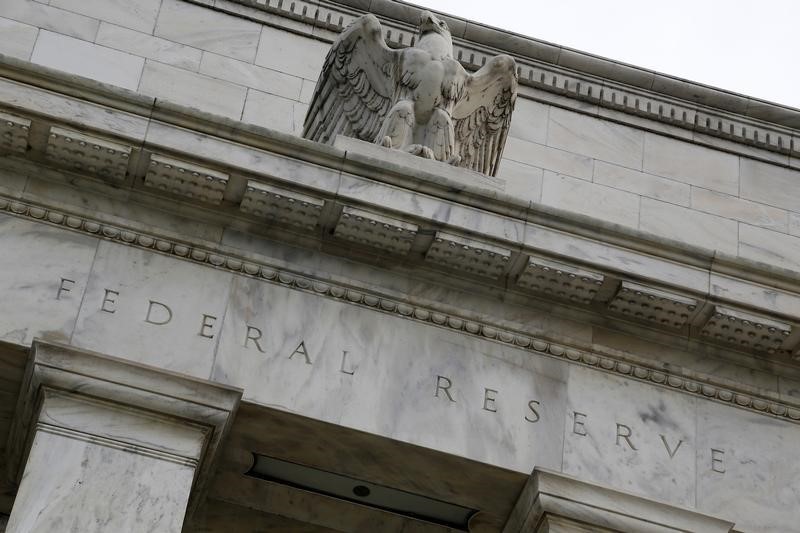Investing.com’s stocks of the week
Investing.com - Federal Reserve policymakers expressed a willingness to end their balance sheet unwinding program later this year and keep rate hikes on hold to get a better sense of the health of U.S. economy and the extent of deteriorating global growth, minutes published Wednesday showed.
The Fed kept its benchmark rate in a range of 2.25% to 2.5% at the conclusion of its two-day policy meeting on Jan. 30.
"Almost all participants thought that it would be desirable to announce before too long a plan to stop reducing the Federal Reserve’s asset holdings later this year," the minutes showed.
The Fed has been allowing as much as $50 billion a month of maturing securities to roll off its balance sheet, which peaked at roughly $4.5 trillion in Jan. 2015, but has now narrowed to about $4 trillion.
The minutes also showed that central bank was willing to keep rate hikes on pause amid expectations for a slower pace of U.S. economic growth.
"Several several participants commented that they had nudged down their outlooks for output growth since the December meeting, citing a softening in consumer or business sentiment, a reduction in the outlook for foreign economic growth, or the tightening in financial conditions that had occurred in recent months."
"Participants noted that maintaining the current target range for the federal funds rate for a time posed few risks at this point. The current level of the federal funds rate was at the lower end of the range of estimates of the neutral policy rate."
At its previous meeting in January, the Fed ditched its usual reference to "gradual" rate hikes included in its policy statement, fueling expectations the central bank may not raise rates at all this year.
According to Investing.com's Fed Rate Monitor Tool, traders believe there's little chance the Fed will hike rates this year, with the odds now more in favor of a rate cut rather than a rate hike.
The Fed attempted to shed some light on the apparent change in its approach to monetary policy, citing both domestic and foreign headwinds, including the ongoing trade dispute between the United States and China.
"With regard to the domestic economic picture, additional data would help policymakers gauge the trajectory of business and consumer sentiment, whether the recent softness in core and total inflation and inflation compensation would persist, and the effect of the tightening of financial conditions on aggregate demand," the minutes showed.
"Furthermore, a patient posture would allow time for a clearer picture of the international trade policy situation and the state of the global economy to emerge and, in particular, could allow policymakers to reach a firmer judgment about the extent and persistence of the economic slowdown in Europe and China."
Allianz (DE:ALVG) Chief Economic Adviser, Mohamed A. El-Erian highlighted four takeaways from the minutes that explained the Fed's policy shift in January.
In the run-up to the release of the minutes, Federal Reserve members reiterated the central bank should continue to adopt a wait-and-see approach amid a slew of negative reports on retail sales, manufacturing and services activity.
"Monetary policy does not appear to be far behind or far ahead of the curve," Cleveland Federal Reserve President Loretta Mester on Tuesday. "This environment gives us the opportunity to continue to gather information on the economy."
